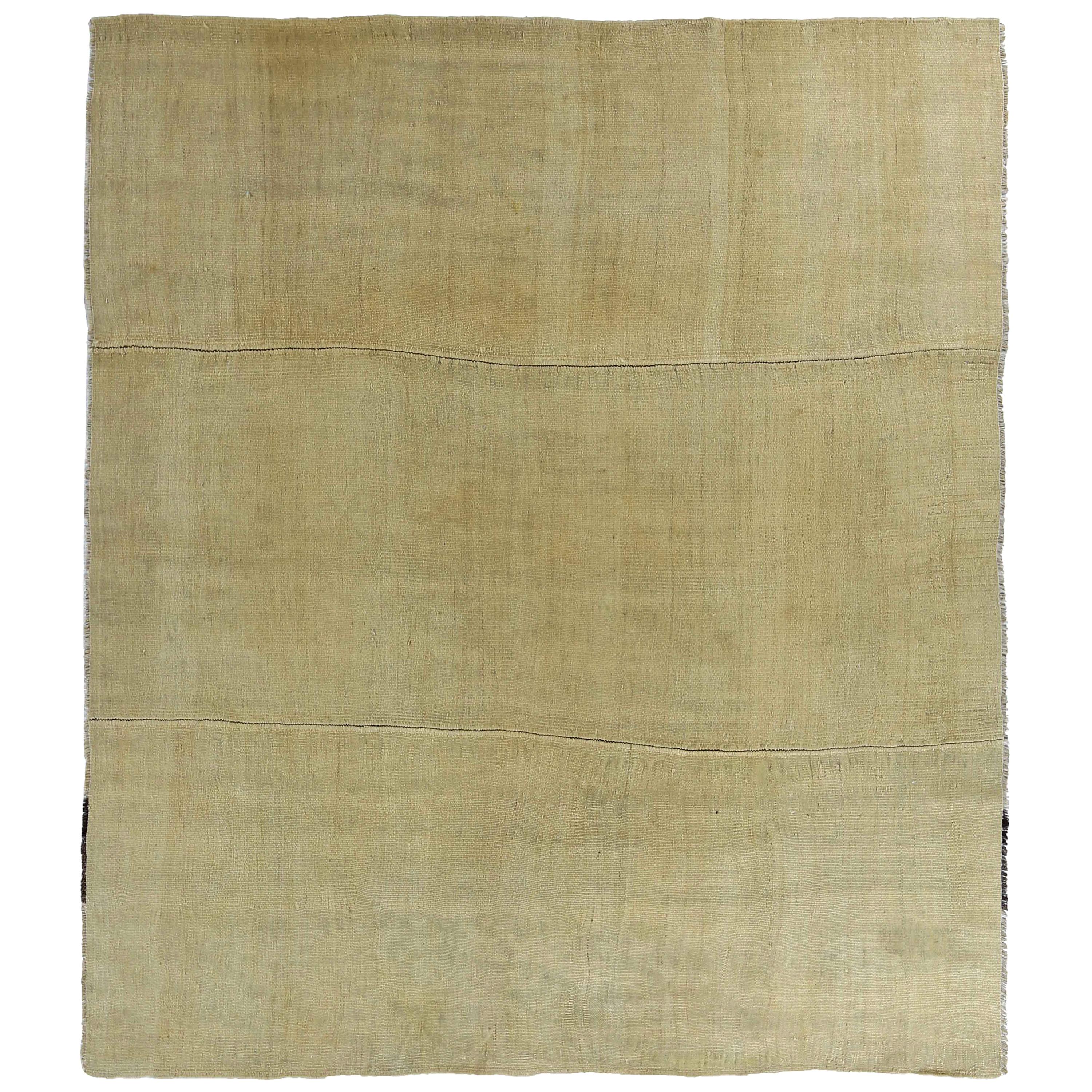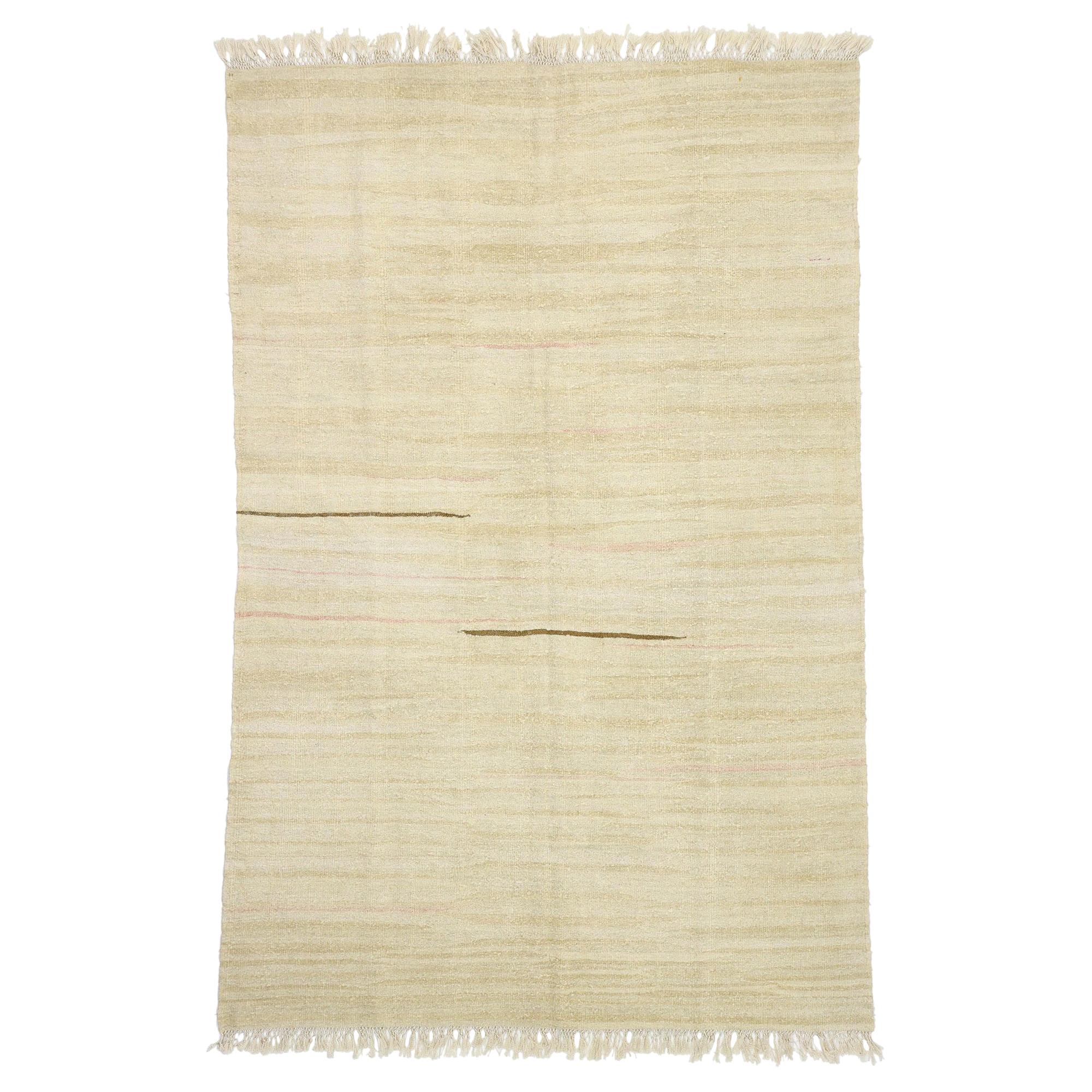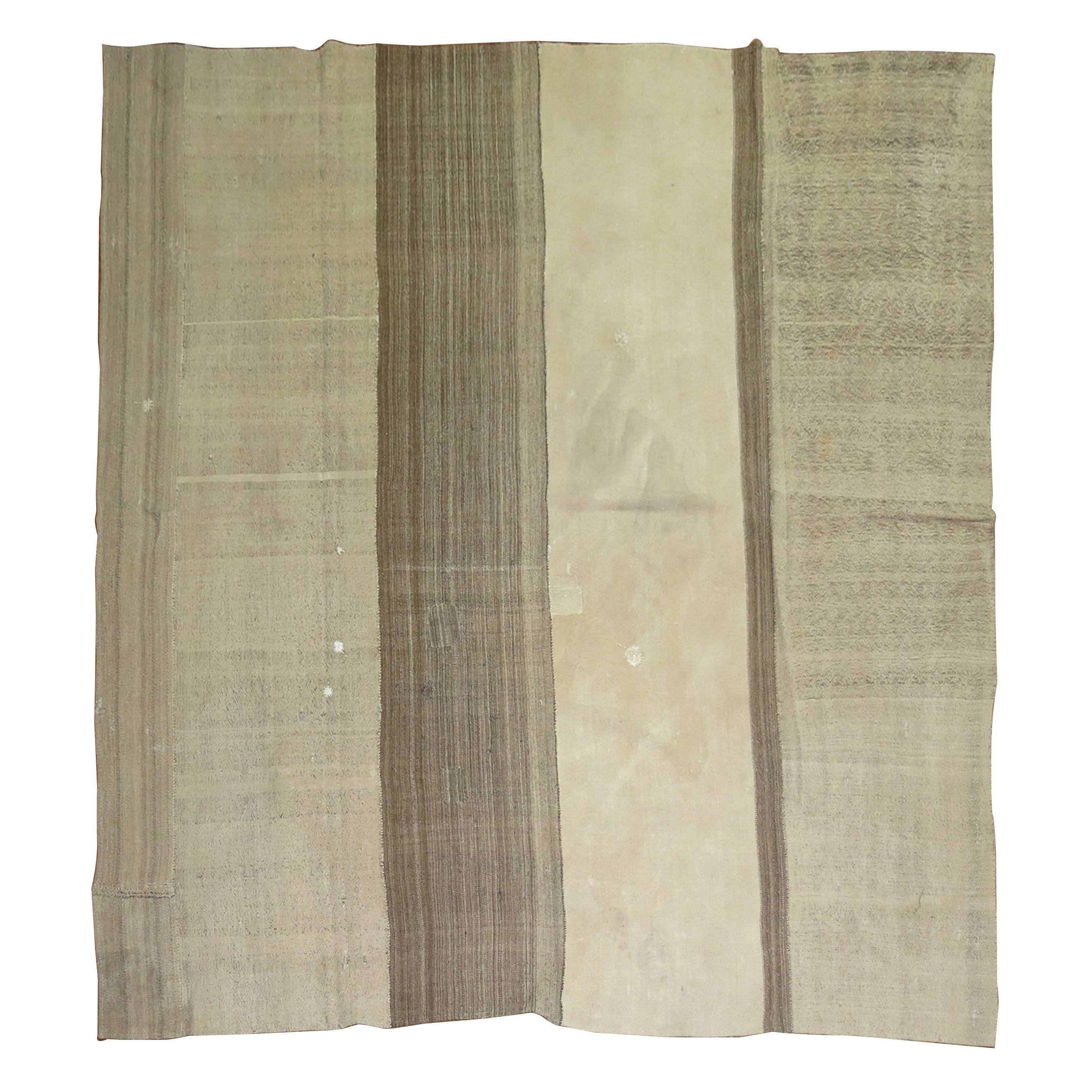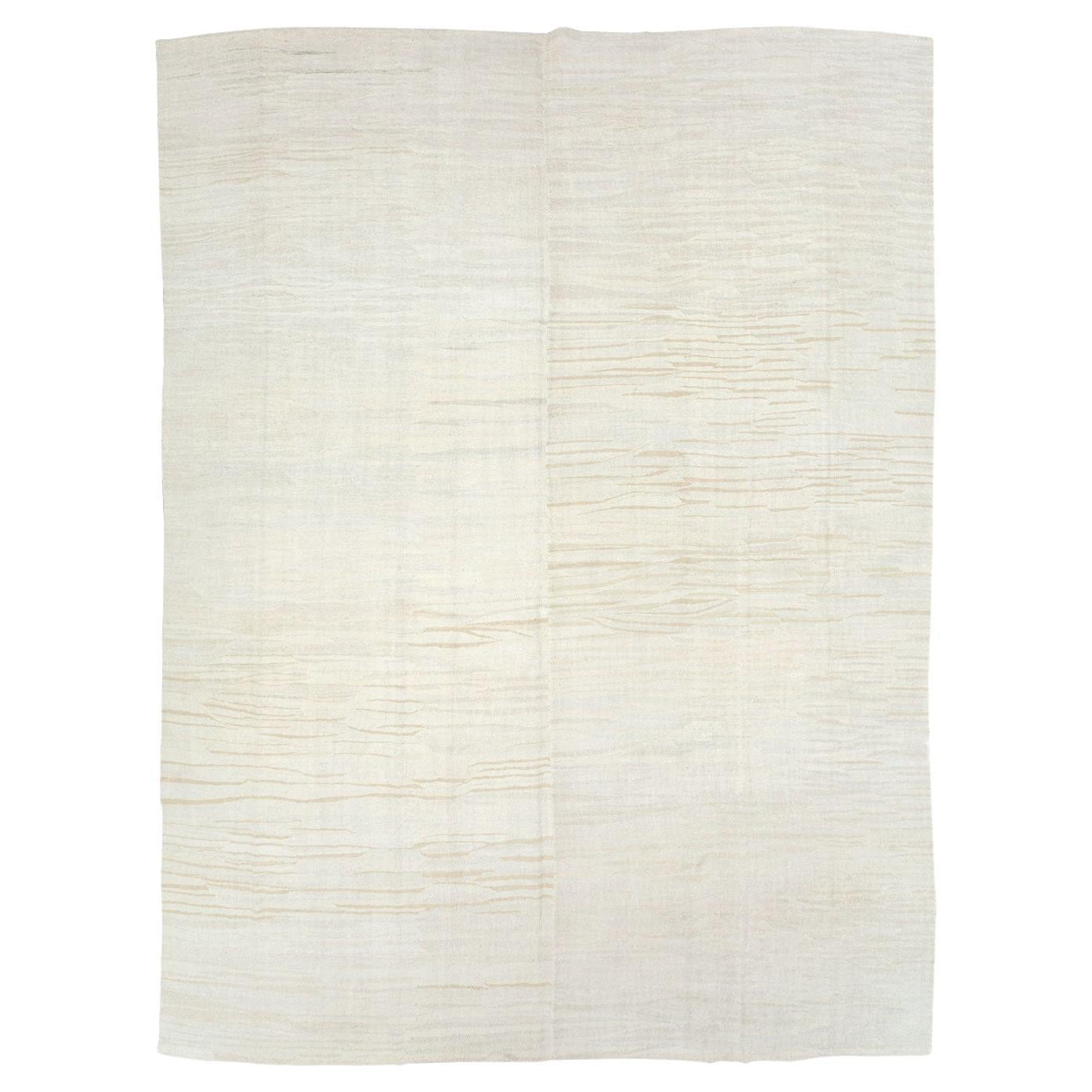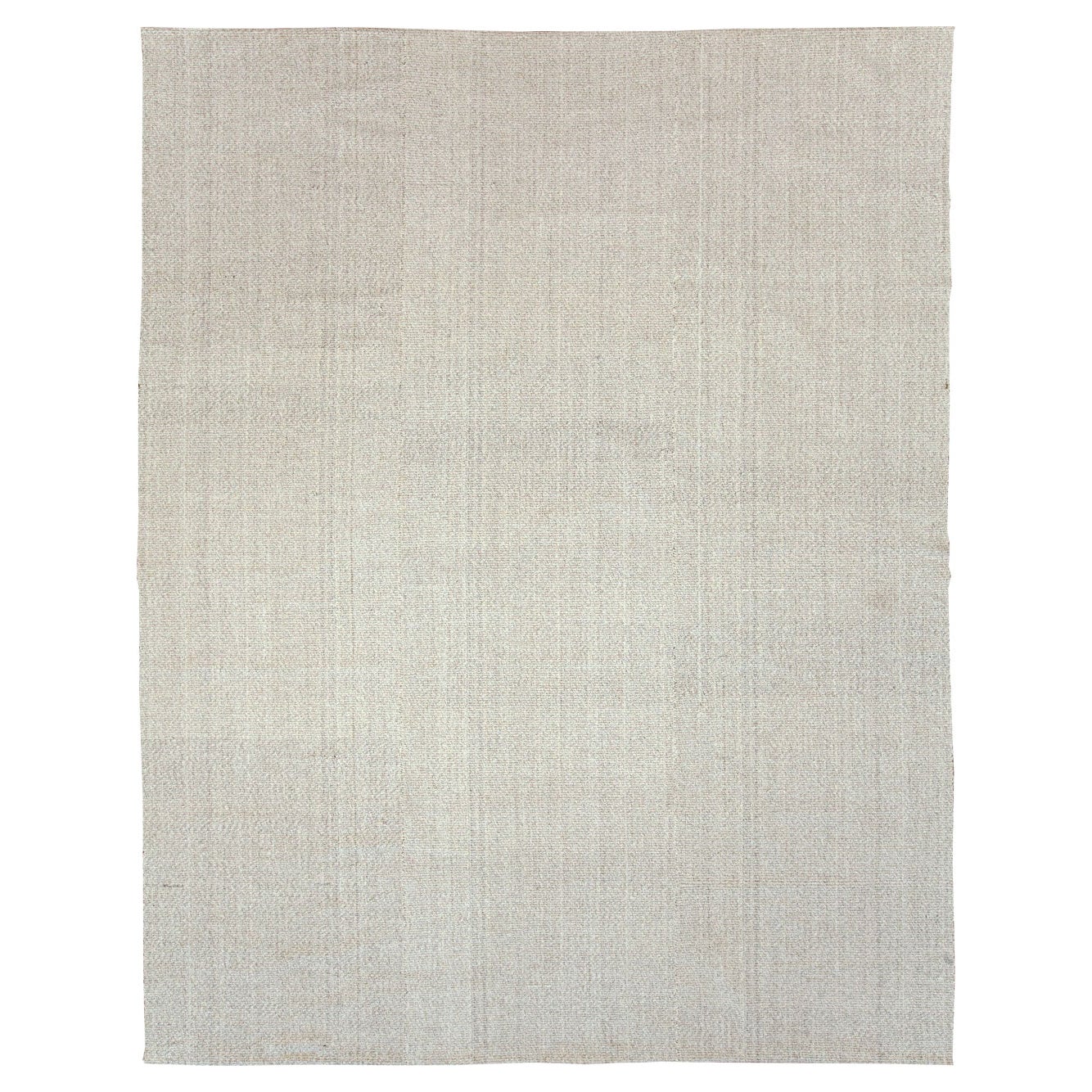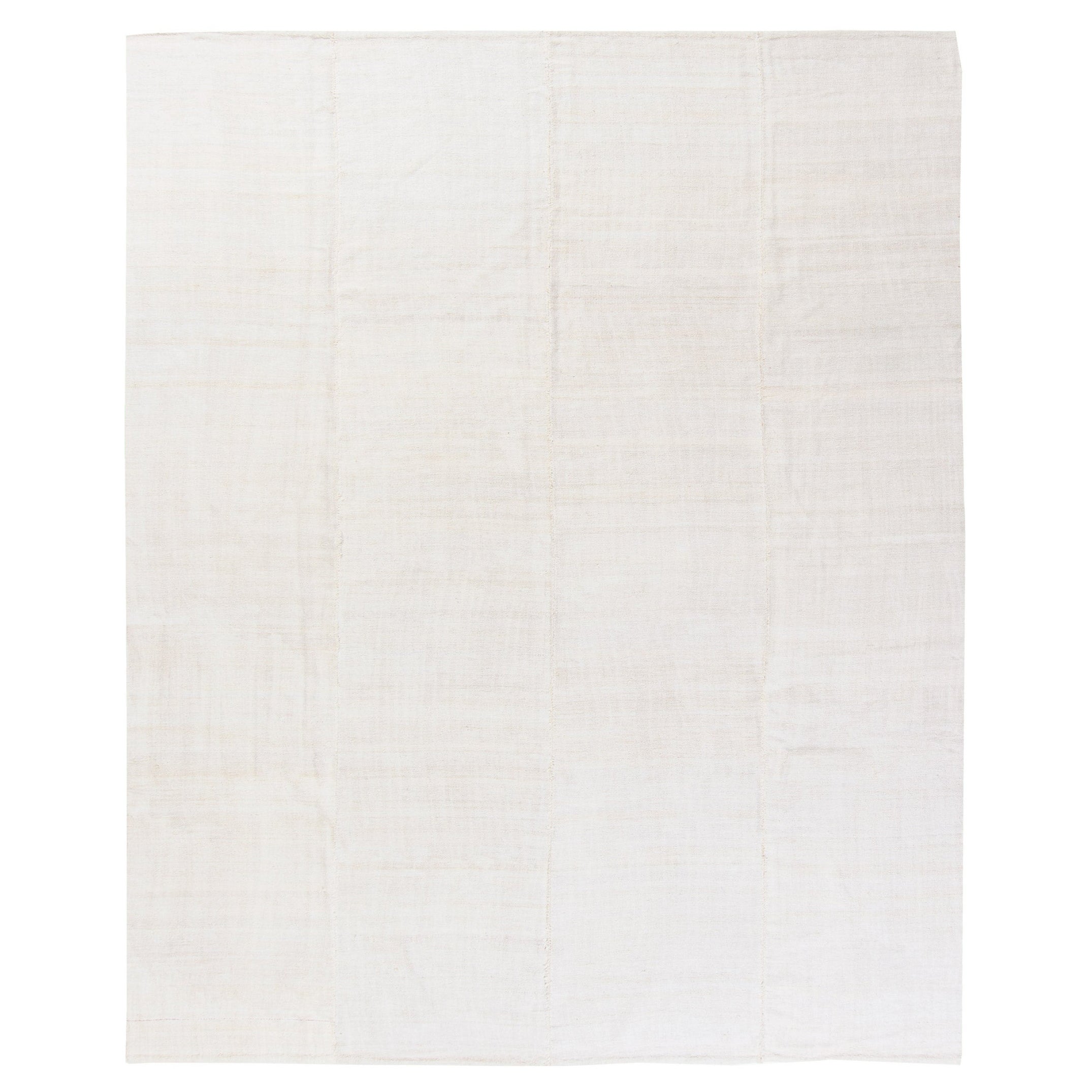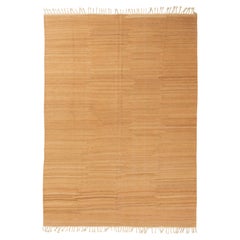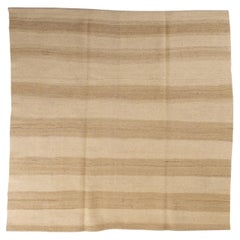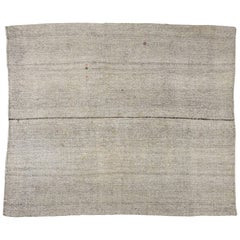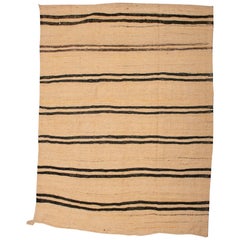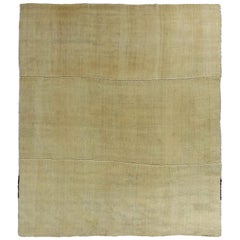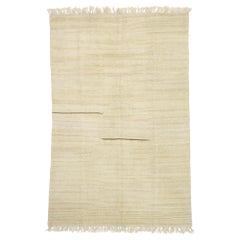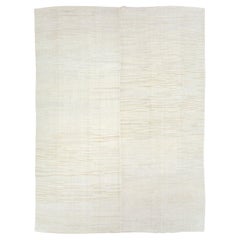Items Similar to Square Turkish Kilim with Camel Field
Want more images or videos?
Request additional images or videos from the seller
1 of 11
Square Turkish Kilim with Camel Field
$3,593.22
£2,662.77
€3,000
CA$4,905.43
A$5,457.09
CHF 2,860.67
MX$66,684.27
NOK 36,427.11
SEK 34,291.08
DKK 22,841.74
Shipping
Retrieving quote...The 1stDibs Promise:
Authenticity Guarantee,
Money-Back Guarantee,
24-Hour Cancellation
About the Item
Some years ago I asked to a Turkish merchant to make for me some minimal kilims with some few vegetal colors.
I waited 6 months, then arrived in these colors: light natural color or camel, light blue, light green.
The result is not uniform but nuanced.
nr. 806.
- Dimensions:Width: 84.26 in (214 cm)Length: 86.62 in (220 cm)
- Style:Minimalist (In the Style Of)
- Materials and Techniques:Wool,Hand-Woven
- Place of Origin:
- Period:
- Date of Manufacture:circa 2000
- Condition:
- Seller Location:Alessandria, IT
- Reference Number:1stDibs: LU1379229058482
About the Seller
4.9
Vetted Professional Seller
Every seller passes strict standards for authenticity and reliability
Established in 1984
1stDibs seller since 2015
366 sales on 1stDibs
Typical response time: 12 hours
- ShippingRetrieving quote...Shipping from: Alessandria, Italy
- Return Policy
Authenticity Guarantee
In the unlikely event there’s an issue with an item’s authenticity, contact us within 1 year for a full refund. DetailsMoney-Back Guarantee
If your item is not as described, is damaged in transit, or does not arrive, contact us within 7 days for a full refund. Details24-Hour Cancellation
You have a 24-hour grace period in which to reconsider your purchase, with no questions asked.Vetted Professional Sellers
Our world-class sellers must adhere to strict standards for service and quality, maintaining the integrity of our listings.Price-Match Guarantee
If you find that a seller listed the same item for a lower price elsewhere, we’ll match it.Trusted Global Delivery
Our best-in-class carrier network provides specialized shipping options worldwide, including custom delivery.More From This Seller
View AllKilim Zagros in Natural Camel Color
Located in Alessandria, Piemonte
Kilim with a particular color, made with natural colorants, done at my request. I waited 6 months for processing.
It is modern and ancient at the same time. Woven in workshop in the ...
Category
Late 20th Century Turkish Other Turkish Rugs
Materials
Wool
Square White and Ecru Little Kilim
Located in Alessandria, Piemonte
Natural colors of undyed wool: simply ! In the East it is placed on a platform where You can sit quietly to sip a cup of tea.
nr. 979.
Category
Mid-20th Century Turkish Minimalist Turkish Rugs
Materials
Wool
Minimal Vintage Kilim ADANA-Osmani or Flatwave or TULU to Customize
Located in Alessandria, Piemonte
Minimalist tribal design like Tulu, undyed colors - Adana-Osmani -
It is possible to bead the entire Kilim with another color (h. 20- 25- 30 cm.) to customize it.
Placed side by side...
Category
Mid-20th Century Turkish Minimalist Turkish Rugs
Materials
Wool
$1,616 Sale Price
50% Off
Vintage Minimalist Anatolian Kilim or Flatwave
Located in Alessandria, Piemonte
Very simple: for Minimalist rooms.
Placed side by side with another similar rug, it becomes a large rug, to make a patchwork of different or similar kilims.
nr. 918.
Now I'm closing ...
Category
Mid-20th Century Turkish Minimalist Turkish Rugs
Materials
Wool
$1,077 Sale Price
40% Off
Vintage Turkish Kilim "Cicim"
Located in Alessandria, Piemonte
nr. 856 - Turkish cicim from Malàtya in natural wools. It is difficult to find these rugs because they are used among nomads, in their tents, for their own use: they are not woven fo...
Category
Mid-20th Century Turkish Minimalist Turkish Rugs
Materials
Wool
Minimal Anatolian Flatwave or Kilim
Located in Alessandria, Piemonte
Minimalist taste for this simple nomadic carpet, suitable for modern homes.
Placed side by side with another similar rug, it becomes a large rug: there are many in my list, published...
Category
Vintage 1940s Turkish Minimalist Turkish Rugs
Materials
Wool
$1,149 Sale Price
20% Off
You May Also Like
Antique Persian Square Rug Kilim Design
Located in Dallas, TX
Antique Persian square rug handwoven from the finest sheep’s wool. It’s colored with all-natural vegetable dyes that are safe for humans and pets. It’s a traditional Kilim design han...
Category
20th Century Persian Kilim Persian Rugs
Materials
Wool
$1,600 Sale Price
20% Off
Vintage Turkish Kilim Rug with Organic Modern Style
Located in Dallas, TX
52623, vintage Turkish Kilim rug with Organic Modern style. Light and airy combined with its simplicity, this handwoven wool vintage Turkish Kilim rug beautifully embodies organic mo...
Category
Late 20th Century Turkish Organic Modern Turkish Rugs
Materials
Wool
$2,320 Sale Price
20% Off
Square Vintage Turkish Kilim
Located in New York, NY
A mid-century Turkish Kilim with a modern twist.
Measures: 8'10'' x 8'10''.
Category
20th Century Turkish Minimalist Turkish Rugs
Materials
Wool
Vintage Turkish Flatweave Kilim Oversize Carpet
Located in New York, NY
A vintage Turkish flatweave Kilim oversize carpet handmade during the Mid-20th Century.
Measures: 14' 5" x 19' 9".
Category
Mid-20th Century Turkish Rustic Turkish Rugs
Materials
Hemp
Mid-20th Century Handmade Turkish Flat-Weave Kilim Room Size Carpet
Located in New York, NY
A vintage Turkish flat-weave Kilim room size carpet handmade during the mid-20th century.
Measures: 10' 7" x 13' 7"
Flat-weave rugs & carpets:
Knotted pile rugs are just one small part of a vast universe of textile techniques suitable for heavy use. If you can imagine it, some weaver has tried it out. Pieces can be roughly divided into those reversible from the start and those never, or at least not initially, reversible. Thus, kilims are considered reversible, while everything else is not.
Kilims are tapestry woven rugs with both sides the same, in either slit technique where colors change, or with various methods of avoiding slits. Slit tapestry weave goes back to ancient times and Coptic Egyptian weavers used it for ornaments on garments and larger wall hangings. Slits can be avoided by dovetailing of colors (warp sharing) or by interlocking the wefts. The Navajo weavers of the Southwest practice the first while the fine shawl weavers of Kashmir and Kerman employed the second. Interlocking produces a one-faced fabric, with smooth and rough, ridged faces. The typical Turkish, Caucasian, or Persian rustic kilim shows slits, but never long ones. Aubusson French carpets are also slit tapestries and the long color transitions are sewn up as part of the regular maintenance. Some kilims are very fine. The best antique urban Sehna (Senna) kilims on wool, cotton or silk warps approximate the comparable rugs in refinement and are the most desirable of all Persian kilims. Although the various flatweave techniques are usually expressed in geometric, simple, often repeating, patterns, Sehna kilims demonstrate that even the most intricate designs can be effectively rendered in flat-stich. The term ‘kilim’ has been extended to cover any pileless, weft-faced heavy textile. Thus, the sectioned and joined northeastern Persian horizontally striped wool rugs are called ‘kilims’. So are the plain-weave end finishes of pile rugs. All these are weft-faced, weft patterned flatweaves.
These sectioned pieces are woven not on a frame loom, but one steadied by the weaver at one end and with the warps fastened down at the other. Only relatively recent have these tribal pieces become available. They are used as floorcoverings, hangings, room dividers, furniture covers. They are mostly bitonal in shades of natural dark brown and beige. Some more recent pieces show weaver innovations with ikat and moire effects. Work proceeds quickly and a skilled weaver can complete a thirty foot strip in almost no time.
Wefts, the elements added as weaving progresses, play an essential part in what is a flatweave. The best-known example of an extra-weft, wrapping technique is on Caucasian and tribal Persian Soumaks, where a pattern weft wraps around the fixed warp, changing as weaving progresses. Soumaks can be large carpets, Kuba in the Caucasus, small bag faces (Caucasian and Persian Shah Savan saddle bags), or cover scatter rugs (Persian Afshars). The Soumak technique is fast, and a weaver can work much more quickly than tying knots. The left-over wefts are cut off on the back, so the front and back are initially different. As a Soumak on the floor gets used, these weft yarns wear away and the two sides converge although the exact texture remains distinct.
There are other ways of pattern by weft. Often on smaller tribal pieces, the pattern weft(s) is (are) part of the weft structure, moving in an out, and holding the whole thing together. These wefts can be complementary or added (supplementary), continuous across the flatweave or cut off as they travel unneeded across the verso. Supplementary weft flatweaves are often very compact and substantial. The nomadic Turkmen and Balouch tribes employ both supplementary and complementary weft techniques on their pieces. Supplementary wefts are often raised on the recto (front) while complementary wefts are flat to the surface. Tribal Kurds employ this extra-wefting technique. The Balouch of Pakistan use complementary wefts almost exclusively on their small woven paraphernalia like salt bags.
Flatweave techniques may be combined on a single piece. Afshar rugs employ plain-weave end strips, preceded by Soumak bands, with pile sections between. The large Bakhtiari saddlebags feature Soumak work, pile “islands” an areas of plain-weave. Qashqai rugs and kilims frequently displays checkerboard end strips in continuous, complementary wefting.
Another distinct flatweave type is the jajim (jijim, cecim) in which a pattern is added with colored wefts as the weaving of the plain-weave ground progresses. Here the wefts are discontinuous and the pattern stands proud from the voided ground. Often made in two pieces on narrow looms and edge-sewn together, these may have geometric patterns. The term ‘jajim’ also refers to the assembled warp-faced strip and stripe covers from the Shah Savan of northwest Persia, the pattern is defined by warps alone, usually in plain stripes, but sometimes in designs of ladders, snakes, human figures and various animals. Here the color changing warps are continuous. Most are wool, a few are silk. Better to call these something else.
Indian ‘Dhurries’ are all cotton kilims and ‘shatrangis’ employ wool wefts on cotton warps. Dhurries are slitless. The cotton texture is more appropriate to the humid and warm climate of the Indian subcontinent. Modern Dhurries...
Category
Mid-20th Century Turkish Modern Turkish Rugs
Materials
Wool
Mehraban Vintage Anatolian Turkish Flat Weave Kilim
Located in WEST HOLLYWOOD, CA
Rug Number
27666
Size
10' 2" X 12' 11"
Design
Kilim
Collection
Flat Weaves
Material
Wool
Texture
Flat Weave
Origin
Turkey
Age
Antique/Vintage
Category
Vintage 1960s Turkish Turkish Rugs
Materials
Wool
More Ways To Browse
Arts Crafts Oak Chair
Bird Tapestry
Danish Writing Desk
Ebonized Wood Dining Table
French Country Dining Tables
French Old Paris Plates
Mahogany Tables Casters
Round Brass Coffee Tables
Used Plastic Molds
Vintage Metal Bar Cart
White Lacquer Dining Chair
Wicker Chair 1950s
1920 Rattan
1940s Maple Table
Alvar Aalto Glass Table
Antique Green Bowl
Bench Brass Legs
Chinese Pagoda
